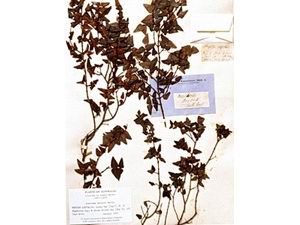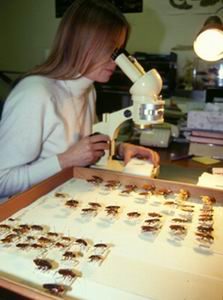Specimens and knowledge
What is a specimen?
Changing values
Our specimens are natural objects, such as plants, animals and fossils, that we have information about, and which form part of an organised collection.
Sometimes, these might have been modified by human activity: for instance many shells have been carved with intricate patterns.

The label tells us when and where this specimen was collected and who collected it. Without this information, the specimen would be a historical artefact, but scientifically it would be useless. The name of the specimen is added once it has been identified.
A coloured tag shows that the specimen is the first of its species to be described and named. This is called the 'type' specimen.
We have over 60 million life science specimens, including over 850,000 types.
Why do we need specimens?
Our life science specimens make up an encyclopaedia of the natural world. They are a rich and unique resource for taxonomists and scientists all over the world.

Learn more about:
 |
Discoveries in freshwater lakes
Scientists have found an incredible abundance of new species in Lake Baikal, Russia. |
Researchers study the appearance, body tissues and DNA of specimens in the collections. As our knowledge of the natural world develops, the specimens and our information about them can be re-examined and re-interpreted. They are the basis of our many research projects. | |
 |
Termite studies
Researchers use the historic termite collection to study termites and soil in tropical rainforests. |
Specimens: natural materials
Our specimens take many different forms, from tiny pollen grains to skeletons of 70-tonne whales. By keeping different kinds and parts of organisms, we maximise our possibilities for research.
Human interpretations
Not everything in our collections was once living. Our art collection is the third largest in the UK. Diaries, notebooks and scientific papers are key for understanding specimens collected in the past, and how they have been investigated. Sometimes, an illustration is the only record we have of a specimen that has been lost or destroyed.